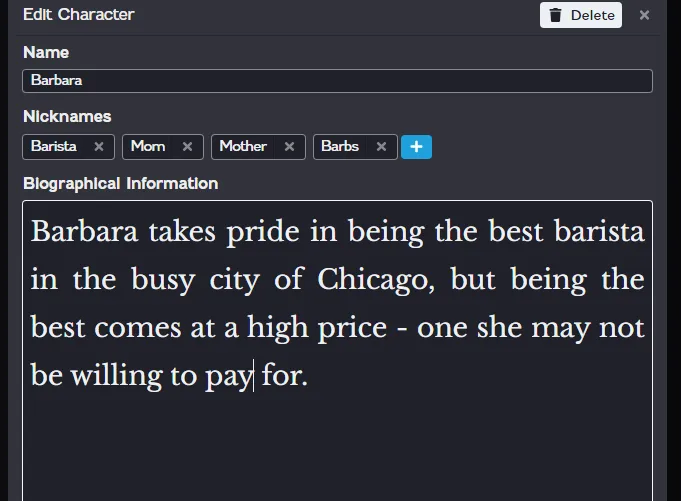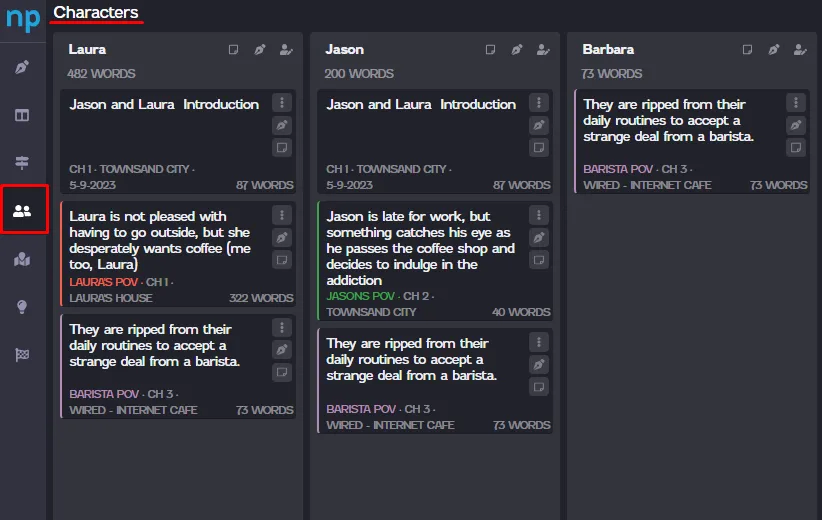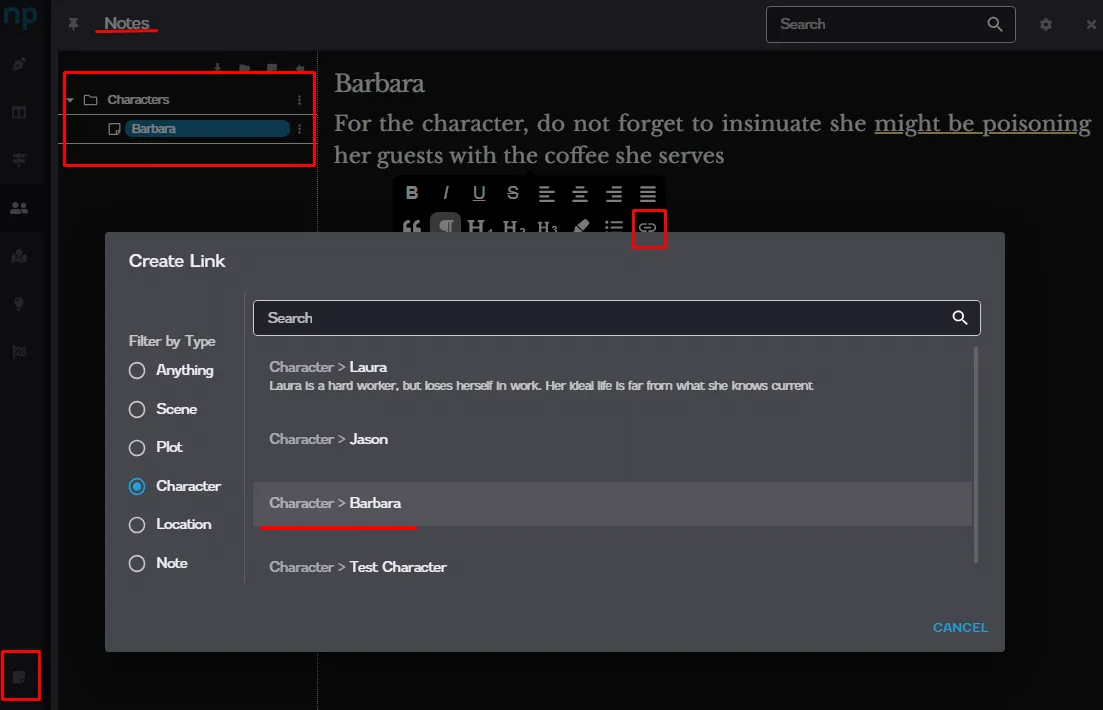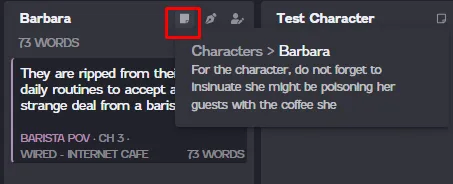What is a NovelPad Character Card? Organizing Your Novel
S.R. Beaston
Crafty with words, wit, and wisdom, just add caffeine to make it more interesting.
Characters are the most important element in any story. Luckily, creating characters is one of the more fun aspects of writing. Strengths, flaws, personality traits, interpersonal relationships, contradictions, and arcs...characters can (and should) have a lot going on.
Constructing, evolving, and setting up your characters’ stories and arcs is what will make or break your book. That’s why NovelPad makes it easy to keep up with your characters at all times (no matter where they may randomly go without your permission).
What Are NovelPad Character Cards?
Character Cards are similar to $ Scene Cards$ and Location Cards. Each character can have its own Character Card within NovelPad. On this card, you can specify their name, nicknames, and biographical information. If you desire a grander character sheet system, you can assign a $ NovelPad Note$ for limitless space and formatting to any Character Card for easy reference.

Tips For Character Cards
Here are some ways you can optimize the use of your character cards in NovelPad.
Insight Board
With the $ Insight Board$ , users can cross-reference elements like Characters, Locations, Plots, $ Color Labels$ , and $ Scenes$ . You might use this function to view things like every scene in which a character appears at a certain location, scenes where multiple characters appear together, or a character's role through the entirety of a specific plotline. All scenes appear in chronological order.
This is an endlessly helpful tool with an infinite amount of uses—especially because $ Color Labels$ are customizable! That means you can track literally anything you'd like.
Nicknames
My favorite Character Card feature is ‘nicknames’. By setting your nicknames—anything the character is called in the story—you can see any scene within which that Character appears, in chronological order, on the Character Board.
Be mindful of your nicknames. It's a good idea to only use nicknames that your character is referred to as. For example, Barbara wouldn’t call herself the ‘caffeinated killer’, but a police officer may mention that nickname in a scene Barbara isn’t actually in.

Character Board
One of the most popular uses for the Character Board is reading every scene a particular character appears in. This is great for focusing on one character at a time, following their journey beginning to end, finding inconsistencies within your character arc, and patching up holes.
The Character Board is also a great visual aid to see which characters are in which scenes. You can use this to better balance their "screen time," see how many of your characters appear together in a particular scene, and more. The columns are click-and-draggable, allowing you to prioritize and organize separate characters.

Notes
Notes, as we mentioned earlier, can be used as Character Sheets. You can organize them into folders and subfolders, format within the sheet, and link any Note to any Character, Plot, Location, Color Label, Scene, or another Note.

Users can create Notes and attach them to Character Cards for easy access reference. If you like to reference character sheets, research, or world-building while you write, click the thumbtack icon in the upper left corner of your Notes board to split screen.
To access character Notes, go to your Character Board and hover over the note icon on that Character.

The best thing about Character Cards—and NovelPad as a whole—is that the tools are what you make of them. The Character Cards can be as descriptive or vague as you want, and the features can be implemented in whatever way works best for your process.
These are just a few ideas of how to use NovelPad Character Cards, but play around with the features to find what works best for you! NovelPad is designed to be adaptable for your personal writing process, so the features stay tucked away until you want to use them.
We hope you find the method that works best for you and your writing goals. Grab your $ no-commitment, no-credit-card free trial $ to see if NovelPad is the writing tool for you!
Like what you're reading?
Join other authors like you in NovelPad’s free writing community!
Join the communitySimilar Posts
What File Formats are Accepted by Kindle Direct Publishing?
File types for ebooks, paperbacks, and hardbacks on Amazon's KDP.
Ollie Ander
Is probably just a couple cats in a trench-coat—the hair shedding and sunlight napping are highly suspect.
How to Publish on Kindle Unlimited | A Comprehensive Step-by-Step Guide
Everything you need to know about enrolling your book on Amazon's Kindle Unlimited.
Ollie Ander
Is probably just a couple cats in a trench-coat—the hair shedding and sunlight napping are highly suspect.
The Writer’s Resolution Guide 2024
Goal ideas and strategies for your new writing year.
Sage Kay
Writer, reader, outfit repeater.
When is the best time to publish a romance novel?
What is the best month and day of the week to publish a romance? Do romance novelists make money?
Rina Fontes Malka
A writer with too many ideas and not enough time.
What is a ghazal? The essence of emotion in poetry
Definition, examples, and history of the ghazal poem.
Hannah Lee Kidder
NovelPad Author
Do Self-Published Authors Make More Money?
Royalty rates, merchandise sales, ad control, and other ways self-published authors stand to make more money.
Bella Rose Emmorey
book editor, rogue behaviorist, digital marketer, writer, brand builder, plant aunt, and cheese enthusiast.